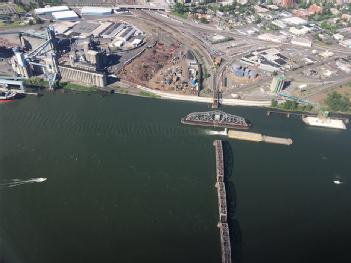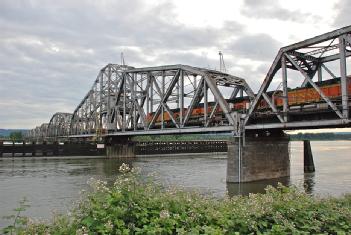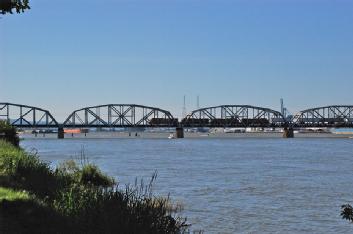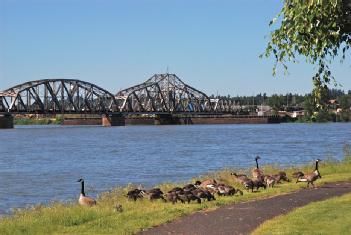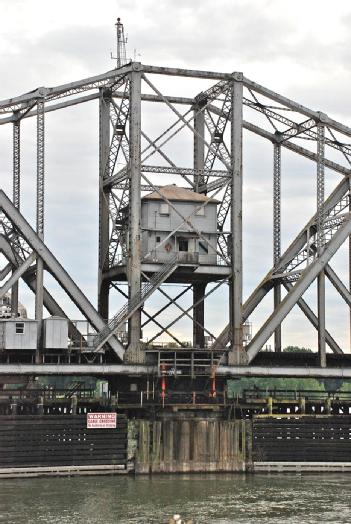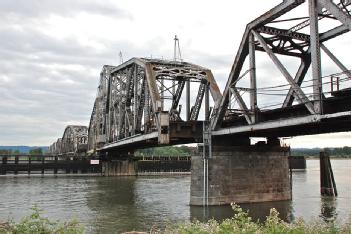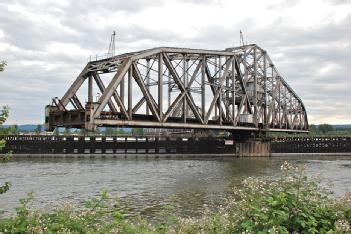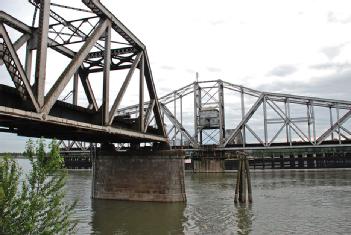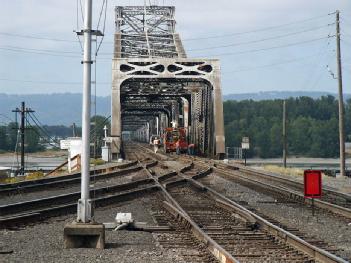
Burlington Northern Railroad Bridge 9.6 |
98660 Vancouver, WA, United States of America (USA) (Washington) |
|
| Address |
Amtrak Station
801-1171 Port Way |
| Floor area | unfortunately not known yet |
Bridges and Tunnels
- Navy / Watercraft
- Railway
|
Opening times
|
5 Amtrak trains each day. Vancouver, WA to Portland. OR: 40 - 52 min. |
|
Status from 03/2017
|
From station and street: free. Crossing only by train: $8.50 |
| Contact | Unknown contact data for this museum - please help via contact form. |
| Homepage | www.amtrak.com |
| Location / Directions |
Between Portland, Oregon, and Vancouver, Washington. The swing span is located at the bridge's north end, in Washington, a short distance from the Vancouver Amtrak station. |
| Description | From Wikipedia, the free encyclopedia: The 2,807-foot (856 m) long bridge has a swing span, which pivots on its base to allow for the passage of taller ships. The bridge carries two railroad tracks, which are used by BNSF, Union Pacific Railroad, and Amtrak. It is one of only two surviving swing-span bridges in the Portland metropolitan area, which once had several bridges of that type. The other survivor is another BNSF bridge located nearby, on the same line and built at the same time, the Oregon Slough Railroad Bridge (also known as BNSF Railway Bridge 8.8). The 9.6 in the name is the distance, in miles, from Portland's Union Station, the same as for Bridge 5.1 (across the Willamette River) and Bridge 8.8 on the same line. HistoryThe first work was performed on February 8, 1906, when work crews began framing the caissons. The steel was fabricated by the American Bridge Company of New York. Construction took approximately 26 months. Steel construction at the site began on June 15, 1907. Structural work on the bridge was completed in June 1908, but its opening to traffic was delayed by problems concerning installation of the heavy machinery required to turn the huge swing span on the new Willamette River bridge located on the same line. The span was the first bridge of any kind to be built across the lower Columbia River, preceding the first road bridge, the nearby Interstate Bridge, by a little more than eight years. The first train crossed the span on October 23, 1908, and the bridge opened for regular use in November 1908. This completed the initial SP&S route, between Portland and Pasco. Operation The swing span is located at the bridge's north end, in Washington, a short distance from the Vancouver Amtrak station. All trains using the bridge are required to call the bridge tender to obtain permission to cross. Boats requesting an opening should contact the bridge over VHF channel 13. |
[dsp_museum_detail.cfm]
| Data Compliance | More Information |
